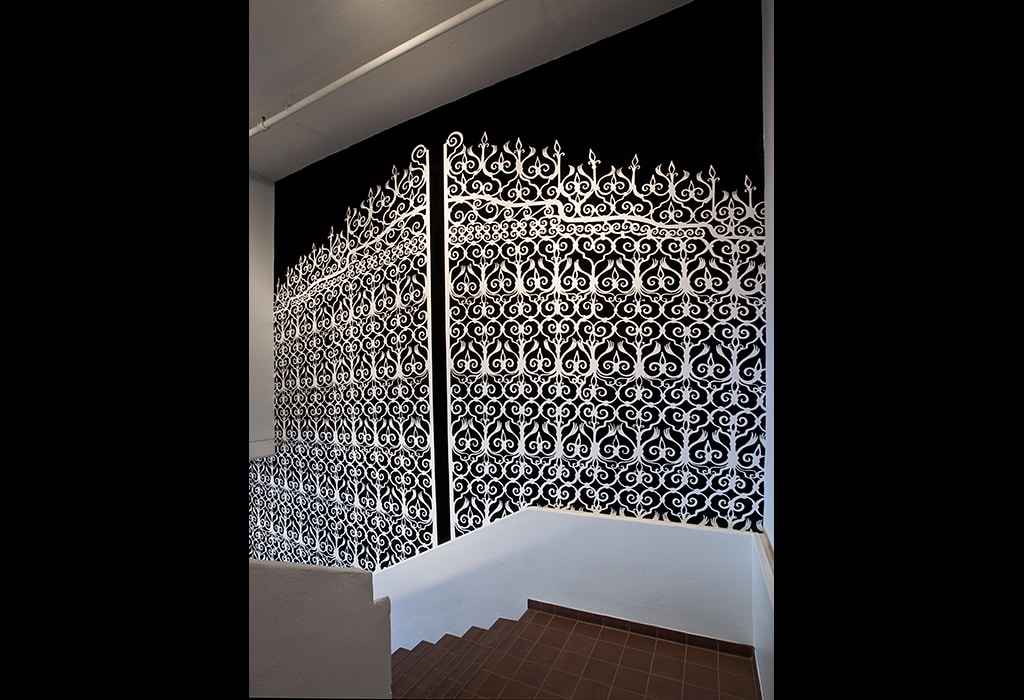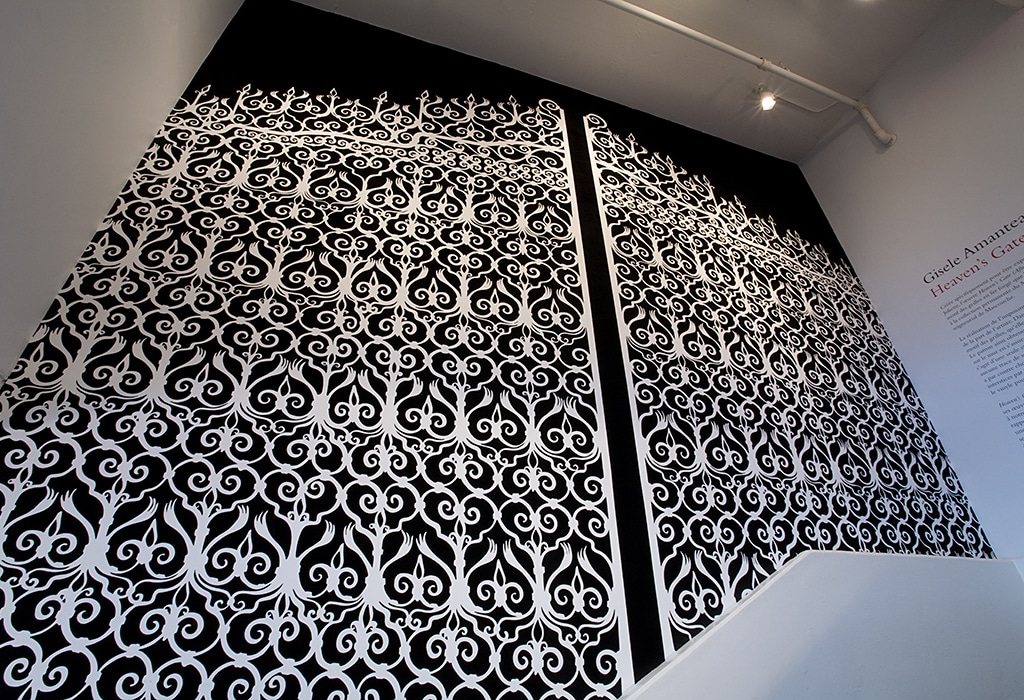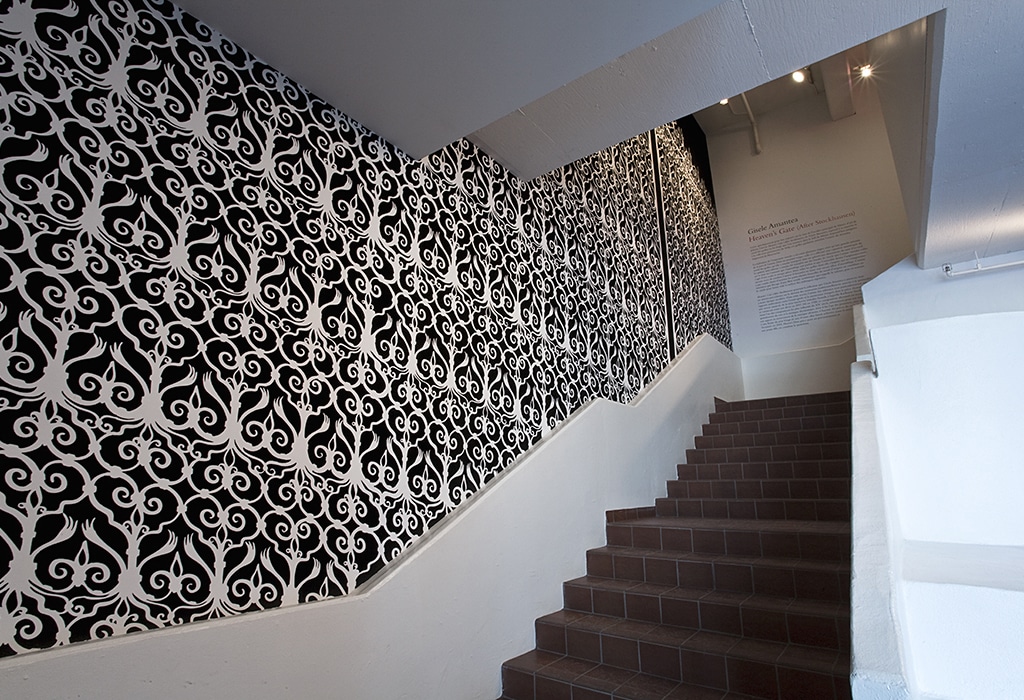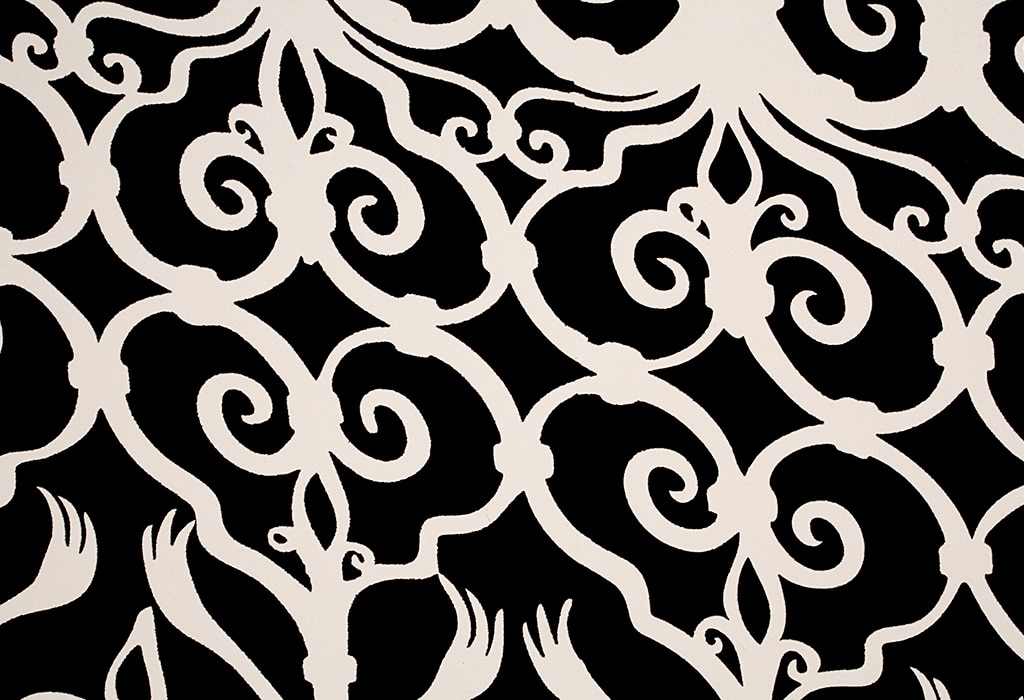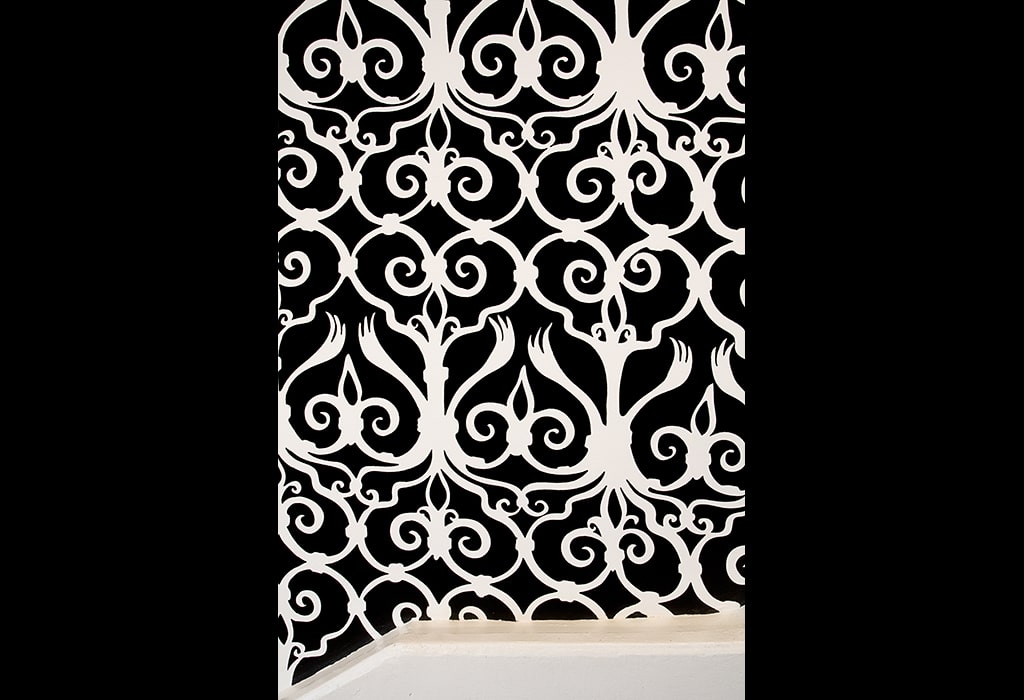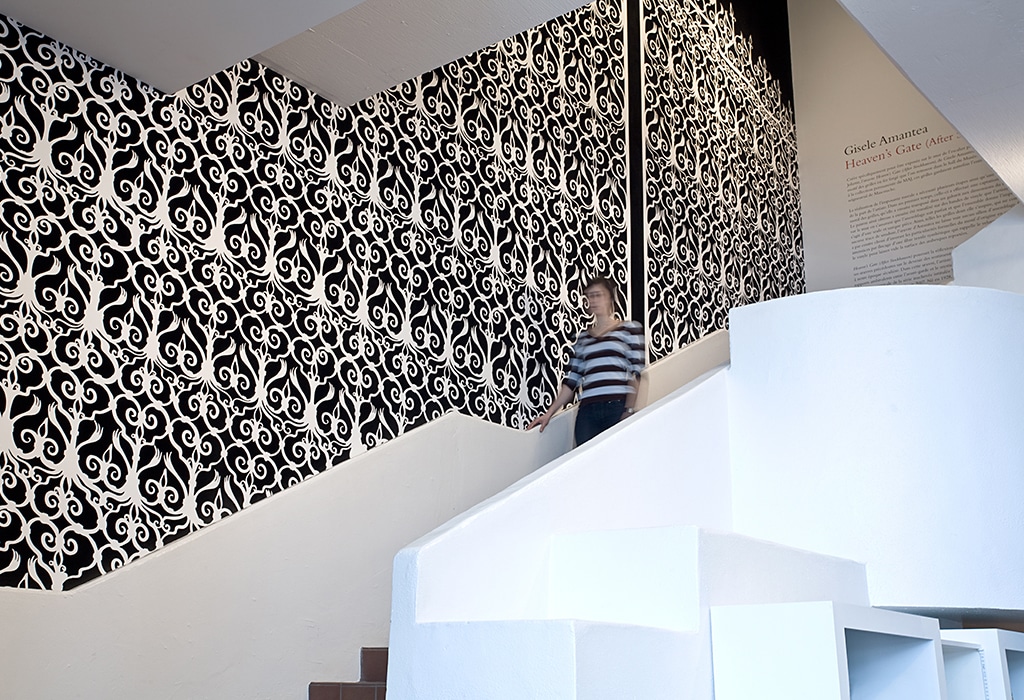Heaven’s Gate (after Stockhausen)
Heaven’s Gate (after Stockhausen) is a site-specific work in which flock was applied directly on the walls of the main stairway at the Musée d’art de Joliette in Joliette, Quebec. The work existed from 2009 to 2012.
This piece was a response to two sources. One was a handmade wrought iron gate that is in the collection of the museum and was permanently installed opposite the staircase in the lobby of the gallery. Previously the gates had served as the entrance to the enclosed grounds of a convent in the countryside near Joliette. The other source is a work by the composer Karlheinz Stockhausen. In the last year of his life Stockhausen composed a work titled Heaven’s Door, which is played by a percussionist directly on a massive wooden door built specifically for the piece. The work involves a paradox that is not only enigmatic but also moving. As a composer of “difficult” avant-garde music, Stockhausen is not someone who is associated with spiritual concerns, yet as an individual he clearly was thinking in these terms as his life was coming to an end. Heaven’s Gate also relates to a number of earlier works that asked what becomes of feelings traditionally associated with the spiritual in a secular age.
Curated by Eve-Lyne Beaudry
Made with the assistance of Anil Ragubance and Nancy Anne McPhee
Media: Flock
Dimensions: approximately 6 x 8 m (19.7’ x 26.3’)
Photography: Richard-Max Tremblay
